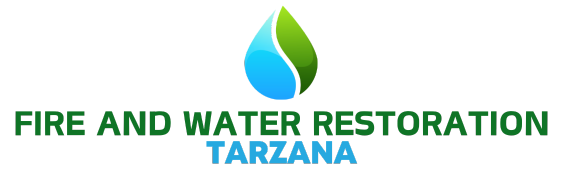When disaster strikes in the form of fire or water damage, the aftermath can feel overwhelming. The journey to recovery requires a well-thought-out plan, patience, and the right professional assistance. If you find yourself facing such a crisis, this guide will help you navigate the road to restoration and regain control over your home or business.
Prioritize Safety and Assess the Situation
Before anything else, ensure that the affected area is safe. Fire damage can weaken structures, leaving walls and ceilings at risk of collapse. Water damage, on the other hand, can introduce electrical hazards, mold, and contaminants. If there is any doubt about safety, consult professionals before entering the premises.
For fire-related damage, local fire officials will determine when it is safe to re-enter the building. If water damage is extensive, shutting off the main power and water supply can prevent further risks. If you have been displaced, secure temporary housing arrangements while the initial assessment takes place.
Notify Your Insurance Provider Immediately
Promptly contact your insurance company to initiate the claims process. Provide a detailed account of the incident and document the damage with photographs and videos. Keep a record of all conversations, claim numbers, and relevant paperwork to streamline the recovery process.
Many insurance policies cover fire and water damage, but coverage details vary. If you’re unsure about policy specifics, ask your insurer to clarify what is included and whether additional steps are required to process your claim efficiently.
Secure the Property to Prevent Further Damage
If your property has been compromised, take measures to prevent additional harm. For fire damage, board up broken windows and secure exposed areas to deter trespassers and weather-related deterioration. If dealing with water damage, remove excess moisture using dehumidifiers, fans, or professional-grade drying equipment to halt mold growth and structural decay.
Additionally, if there is a risk of burst pipes, leaking ceilings, or flooding, shut off the main water valve and seek immediate plumbing assistance.
Sort and Salvage Valuables
Evaluate your belongings to determine what can be restored and what must be discarded. Fire-damaged items often require specialized cleaning techniques, while water-exposed materials must be dried quickly to prevent mold infestations. Sentimental items, important documents, and electronic devices should be prioritized for restoration efforts.
If necessary, relocate salvageable possessions to a dry, climate-controlled space while restoration work progresses.
Seek Professional Restoration Services
The complexity of fire and water damage often necessitates expert intervention. A professional restoration team can assess the structural integrity of your property, remove hazardous debris, and use advanced techniques to restore affected areas. These experts employ specialized equipment for smoke and soot removal, decontamination, and mold remediation.
Attempting to clean up extensive damage without professional help can lead to long-term health risks and structural issues. Trust certified professionals to handle the restoration process efficiently and safely.
Address Smoke, Soot, and Water Damage Thoroughly
Fire damage often leaves behind smoke residue and soot, which can infiltrate walls, furniture, and HVAC systems. Removing these residues requires industrial-strength cleaners and ozone treatments to eliminate lingering odors and toxins.
Water damage must be addressed swiftly to prevent mold growth, which can start within 24 to 48 hours. Drying out the area with powerful dehumidifiers, air movers, and moisture-absorbing materials is crucial. If mold has already developed, professional mold removal services should be employed to prevent respiratory and structural issues.
Plan for Repairs and Reconstruction
Depending on the extent of the damage, rebuilding may be necessary. This could include repairing walls, flooring, roofing, and electrical systems. Work with licensed contractors who specialize in post-disaster reconstruction to ensure that your home or business meets safety standards.
Before finalizing any contracts, obtain multiple estimates, review credentials, and ensure that all permits are in place for major repairs.
Evaluate Your Insurance and Financial Situation
After an incident, it’s a good time to review your insurance coverage. If the damage was extensive, you may need additional financial assistance beyond what your policy provides. Look into disaster relief programs, emergency loans, or grants from government agencies and non-profits that assist homeowners and businesses in recovery efforts.
Consider updating your policy to cover potential future risks, such as flood insurance if you live in a flood-prone area or expanded coverage for fire-related losses.
Implement Preventative Strategies for the Future
Once your home or business has been restored, take proactive measures to minimize future risks. Here are some preventative actions you can take:
– Install and maintain smoke detectors and fire extinguishers in key areas.
– Regularly inspect electrical wiring, appliances, and heating systems.
– Conduct routine plumbing checks to detect leaks before they escalate.
– Improve drainage systems to prevent water accumulation near the foundation.
– Consider using fire-resistant and water-resistant materials in construction or renovations.
– Taking these steps can significantly reduce the likelihood of experiencing another disaster and protect your property long-term.
Emotional and Psychological Recovery
Recovering from fire or water damage is not only about physical restoration—it also takes an emotional toll. The loss of cherished possessions and the disruption of normal life can be deeply distressing. Seeking support from family, friends, or professional counselors can help ease the emotional burden.
Joining community support groups or engaging in stress-relieving activities can also aid in mental recovery. If you have children, reassure them that everything is being taken care of and maintain routines to provide stability.
Fire and water damage can feel like a devastating setback, but with a structured approach, recovery is achievable. Prioritizing safety, securing professional assistance, and taking preventative measures will help you rebuild a safer, stronger environment.
Restoration takes time, but resilience and strategic planning will ensure a successful recovery.
Do not forget: Every setback is an opportunity to rebuild stronger and safer. Take this chance to fortify your home or business against future disasters and focus on what truly matters—your well-being and peace of mind.
